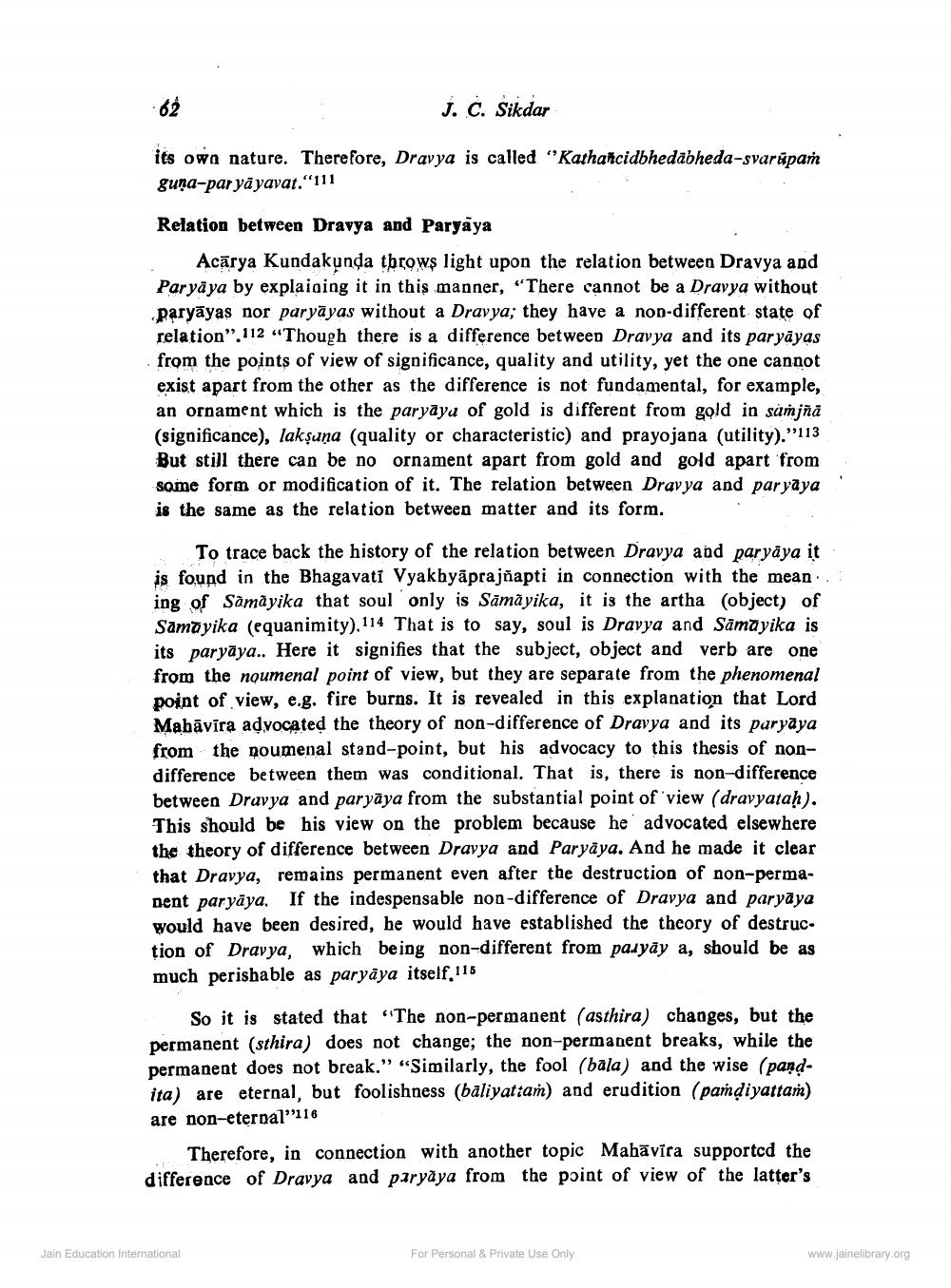________________
62
j. C. Sikdar
its own nature. Therefore, Dravya is called "Kathañcidbhedabheda-svarăpam guna-par yāyavat."111
Relation between Dravya and Paryaya
Acārya Kundakunda throws light upon the relation between Dravya and Paryaya by explaining it in this manner, "There cannot be a Dravya without paryāyas nor paryāyas without a Dravya; they have a non-different state of relation". 112 “Though there is a difference between Dravya and its paryāyas from the points of view of significance, quality and utility, yet the one cannot exist apart from the other as the difference is not fundamental, for example, an ornament which is the paryāya of gold is different from gold in samjñā (significance), lakṣuṇa (quality or characteristic) and prayojana (utility)."113 But still there can be no ornament apart from gold and gold apart from some form or modification of it. The relation between Dravya and paryāya is the same as the relation between matter and its form.
To trace back the history of the relation between Dravya and paryāya it is found in the Bhagavati Vyakhyāprajñapti in connection with the mean..: ing of Sāmāyika that soul only is Sāmāyika, it is the artha (object) of Samāyika (equanimity),114 That is to say, soul is Dravya and Sāmāyika is its paryāya.. Here it signifies that the subject, object and verb are one from the noumenal point of view, but they are separate from the phenomenal point of view, e.g. fire burns. It is revealed in this explanation that Lord Mahāvīra advocated the theory of non-difference of Dravya and its paryāya from the noumenal stand-point, but his advocacy to this thesis of nondifference between them was conditional. That is, there is non-difference between Dravya and paryāya from the substantial point of view (dravyatah). This should be his view on the problem because he advocated elsewhere the theory of difference between Dravya and Paryāya. And he made it clear that Dravya, remains permanent even after the destruction of non-permaDent paryāya. If the indespensable non-difference of Dravya and paryaya would have been desired, he would have established the theory of destrucțion of Dravya, which being non-different from pasyāy a, should be as much perishable as paryäya itself, 116
So it is stated that “The non-permanent (asthira) changes, but the permanent (sthira) does not change; the non-permanent breaks, while the permanent does not break." "Similarly, the fool (bala) and the wise (pandita) are eternal, but foolishness (bāliyattam) and erudition (pamdiyattam) are non-eternal”116
Therefore, in connection with another topic Mahāvīra supported the difference of Dravya and paryaya from the point of view of the latter's
Jain Education International
For Personal & Private Use Only
www.jainelibrary.org




